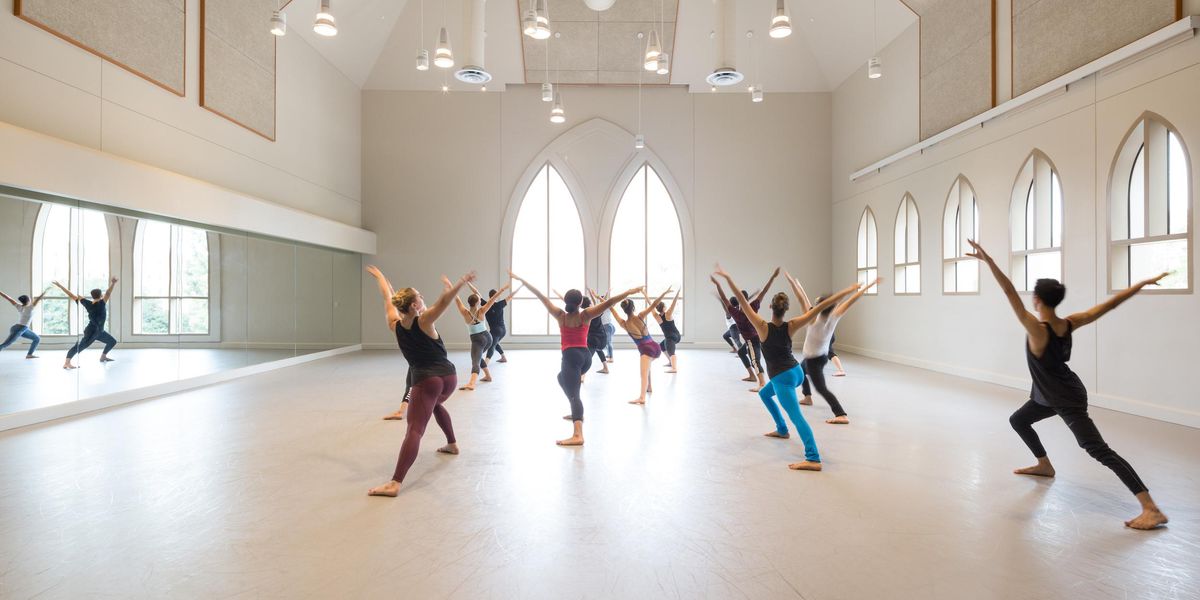2015 Auditions Guide: Ramp-up to Audition Season
Tips for tweaking your aerobic and strength-training workouts
After spending her first professional years with Royal New Zealand Ballet, North Carolina native Sara Havener was longing to dance closer to home. She moved back and sent resumés to as many American ballet companies as possible. Havener believes her consistent cross-training was key in helping her nail a three-day audition with Atlanta Ballet, where she is enjoying her debut season. “Swimming intervals helped my stamina,” she says, and Pilates mat work kept her core strong.
Auditioning in peak condition shows directors your strength and provides the confidence to attack any movement thrown your way. “You never know how vigorous auditions will be, so being as fit as possible prepares you for anything,” says Megan Richardson, clinical specialist at the Harkness Center for Dance Injuries at New York University’s Langone Medical Center. Here are strategic cross-training guidelines for four to six weeks prior to audition season.
Cardio Training
Especially for dancers who don’t regularly cross-train, integrating cardio workouts four to six weeks before auditions may be the boost you need to get noticed. Technique class requires only short bursts of activity, so additional training is needed to improve endurance for full-out contemporary choreography or longer classical variations. This means not getting as winded during long jump sequences and a more speedy recovery between combinations. “If your body is able to recover quickly, your mind is in the moment rather than catching up,” says Richardson.
As a baseline, Julie O’Connell, director of performing arts medicine for Athletico Physical Therapy in Chicago, recommends dancers do cardio for 20 to 30 minutes, three times a week. But if cardio is a new addition, Richardson says, two days at 15 to 20 minutes is a safe starting point, adding five-minute increments as stamina increases.
Interval training is even more beneficial than steady paces since high/low-intensity intervals more closely mimic the varied aerobic demands of an audition. Choose a workout—elliptical, treadmill, biking, swimming, stair climber—that works for you. Warm up for two to three minutes at low/moderate intensity, then ramp up to moderate/high intensity for four minutes, then recover for two to three minutes moderately. Cycle back and forth between four minutes high intensity and two minutes recovery for 20 to 30 minutes.
Strength in Variety
Auditions are notorious for switching physical gears quickly. Identifying weak or imbalanced areas can help you plan goal-oriented strength workouts. For example, ballet dancers might usually avoid upper-extremity strength-training, but most classical companies are diversifying their repertoires with contemporary work. Audition preparation should include buildingupper-body power to tackle floor work and extreme partnering.
O’Connell suggests yoga because of the upper-body strength required to hold postures, the focus on parallel alignment and the active way it works flexibility. Both Pilates and Gyrotonic are great for strengthening the transverse abdominus and build placement on a solid foundation. If your goal is to truly get stronger and connect to your core in four to six weeks, work deeply within simpler exercises and tap into weaker muscles rather than relying on the ones that are already strong.
Richardson suggests a variety of techniques for improved strength. “If a body does the same thing every day, it stops adapting. We get faster responses by changing up routines,” she explains.
Circuit training with weights, Thera-Bands, gym machines and your own body weight is an effective way to incorporate cardio into strength training. At a minimum, shoot for strength-focused sessions two days a week.
During the final two weeks before auditions start, cross-training should wind down. Scale back to zero to two cardio workouts at a steady pace rather than intervals, and take a restorative yoga or beginner Pilates class. Easing up on intensity levels and cutting back on sessions help muscles reach optimal recovery and maximize your energy level for auditions.
Keep in Mind
Beware of letting your cross-training become overly time-consuming or draining. “Every workout done outside of dance is preparation for becoming a better dancer,” say Athletico Physical Therapy’s Julie O’Connell.
To avoid overtraining, take one day a week off for rejuvenation. “Get a massage, soak in a hot tub, foam-roll and rest,” she says. The muscles (and the mind) need the time to repair and restore to a stronger state.
At-Home Circuit
Megan Richardson, from the Harkness Center for Dance Injuries, recommends this workout to increase your strength and get your heart pumping. Warm up for three to five minutes, then repeat the circuit three times, followed by your choice of abdominal exercises for 5 to 10 minutes.
1. Burpees: Jump up and reach arms to the ceiling. Squat down and jump or step feet into a plank. Hold or do a push-up. Reverse the sequence and repeat 10 times, building up to 20.
2. Lunges with arm work: Hold one dumbbell (between 3 and 10 pounds) in each hand. Step right foot forward and lunge down, bending both knees. As you lower, raise arms to a T, elbows slightly bent. Straighten legs, lower arms and repeat 5 to 10 times on the right, then the left.
3. Planks: Hold for 30 seconds, working up to one minute. Begin with an elbow plank, elbows on the floor directly under shoulders. Add a side-plank variation (facing one direction on one elbow only) and repeat on the other side.





